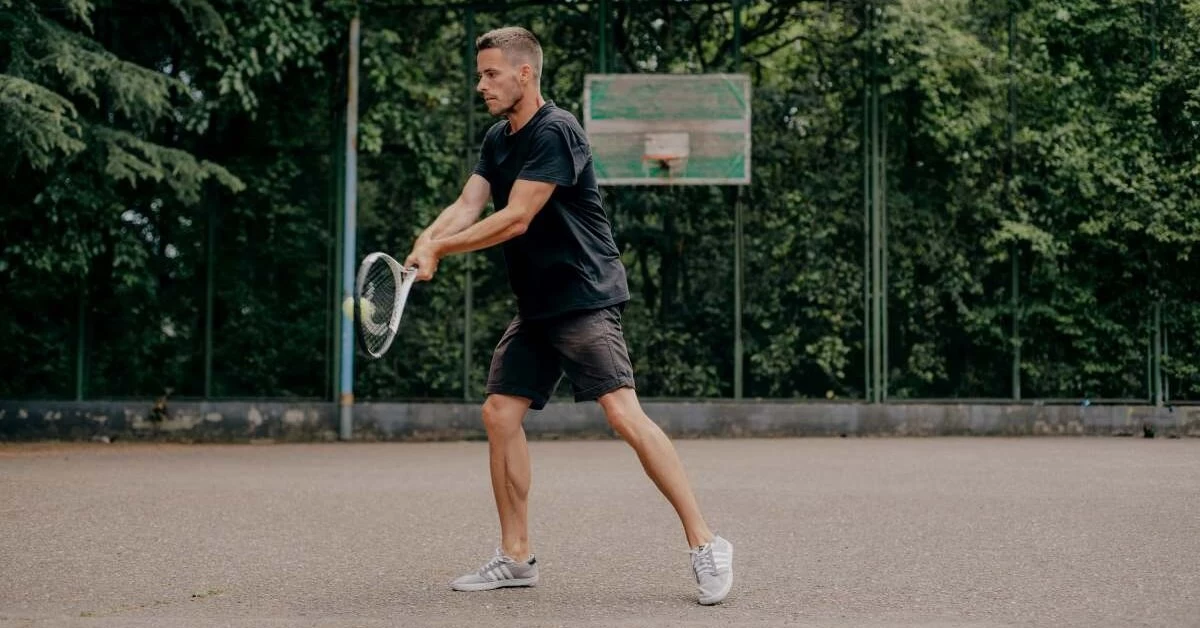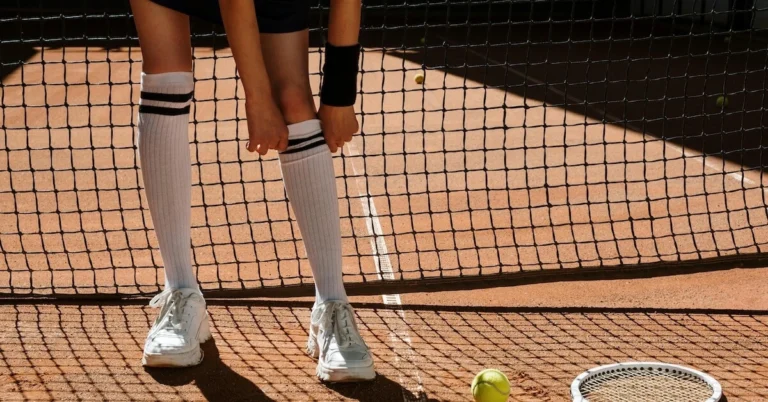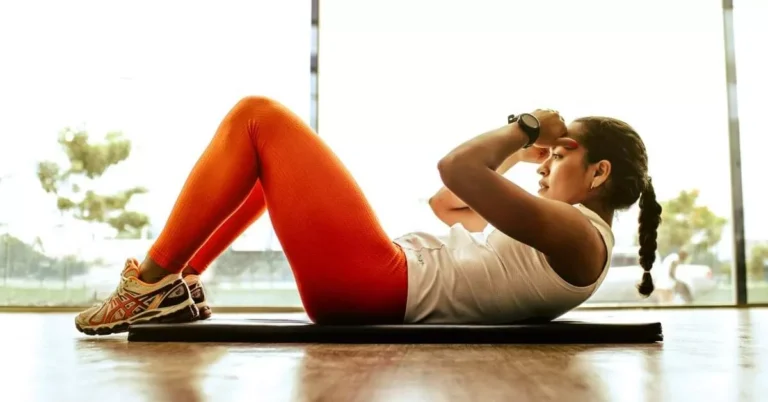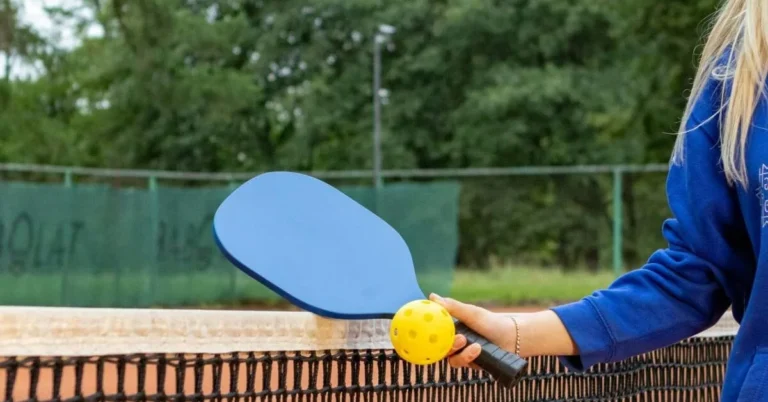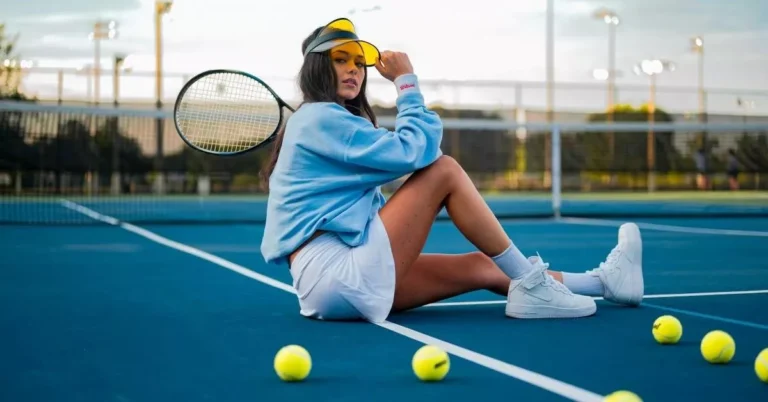Let’s delve into the world of solo tennis practice – a delightful blend of determination and the occasional conversation with oneself. Whether you’re a lone wolf by choice or circumstance, mastering the art of practicing tennis alone can be both rewarding and, dare I say, entertaining.
Join me as we explore the ins and outs of perfecting your game when your only rally partner is the trusty tennis ball machine or a well-meaning wall. So, grab your racquet, embrace the solitude, and get ready for a lighthearted yet insightful journey through the world of practicing tennis alone. It’s time to serve up some solo fun and take your game to new heights – one solo swing at a time!
Pro:
✅ rarely jams ✅ high tolerance for debris ✅ robust
Con:
❌ heavy
The Importance of Practice Tennis Alone
Practicing tennis alone can be a great way to improve your skills and technique. It allows you to focus on specific areas of your game, without the distractions of playing with a partner or in a group.
One of the advantages of practicing tennis alone is that it allows you to work on your weaknesses. For example, if you struggle with your backhand, you can focus on that stroke and practice it repeatedly until you feel comfortable with it. Additionally, practicing tennis alone allows you to work on your footwork and movement around the court, which is essential for playing at a high level.
Another advantage of practice tennis alone is that it can be done at any time and any place. You don’t need a partner or a court to practice your strokes. You can practice your swing in your backyard, hit against a wall, or use a ball machine to work on your shots. This flexibility allows you to fit practice into your busy schedule and can help you stay motivated to improve your game.
However, there are also some disadvantages to practicing tennis alone. One of the main drawbacks is that you don’t get the same level of competition and feedback that you would get from playing with a partner or in a group. It can be difficult to simulate the pressure and intensity of a match when practicing tennis alone.
Setting Up Your Own Practice Environment

When practicing tennis alone, it’s important to have a suitable practice environment. Fortunately, there are several options available that can help you set up your own practice environment.
| Using a Wall | One of the most popular ways to practice tennis alone is by hitting against a wall. A solid wall is a great way to improve your groundstrokes, volleys, and even your serve. All you need is a flat wall with enough space to hit the ball. A tennis wall is even better, as it is specifically designed for tennis practice and has markings that can help you with your aim. |
| Using a Net | If you have access to a tennis net, you can practice your serves and volleys. You can set up a net in your backyard or at a local park. If you don’t have a tennis net, you can use a portable net or even a makeshift net made of string or rope. |
| Using a Racquetball Court | A racquetball court is another great option for practicing tennis alone. The walls of a racquetball court are perfect for practicing your groundstrokes, and the court itself is the perfect size for practicing your footwork and movement. You can also use the service box and baseline markings to practice your serves and returns. |
| Using Concrete or Asphalt | If you have a large, flat area of concrete or asphalt, you can use it to practice your footwork and movement. You can also use it to practice your serves and returns. Just make sure the surface is clean and free of debris to avoid slipping or tripping. |
Using a Tennis Ball Machine for Practice
Practicing tennis alone can be challenging but using a tennis ball machine can help you improve your skills. A tennis ball machine is a great tool that can help you practice your shots, footwork, and reaction time.
One of the benefits of using a ball machine is that you can customize the settings to suit your needs. You can adjust the feed rate, spin, and speed of the balls to match your level of play. This allows you to practice at your own pace and gradually increase the difficulty as you improve.
Another advantage of using a ball machine is that it can help you work on your serves. You can set the machine to throw self-feed balls, which can help you practice your ball toss and improve your consistency. Additionally, you can adjust the height and speed of the balls to simulate different types of serves.
When using a ball machine, it’s important to focus on your footwork as well. You can practice moving around the court and hitting the balls from different positions. This will help you improve your agility and reaction time, which are essential skills for any tennis player.
Improving Your Serve and Stroke
When practicing tennis alone, it can be challenging to improve your serve and stroke techniques. However, with the right approach, you can still make significant progress. Here are some tips to help improve your serve and stroke when practicing alone:
1. Self-Feed Drills
One of the best ways to practice your serve and stroke when alone is by using self-feed drills. This involves hitting the ball to yourself, which can help you focus on your stroke mechanics and improve your consistency. You can practice your forehand, backhand, volley, topspin, slice, groundstrokes, volleys, overheads, and more.
2. Use a Ball Machine
Another effective way to practice your serve and stroke when alone is by using a ball machine. With a ball machine, you can simulate different types of shots, including flat, slice, topspin, and kick serves. You can also adjust the speed and direction of the ball to practice different strokes.
3. Focus on Your Technique
When practicing your serve and stroke alone, it’s essential to focus on your technique. You can use a mirror or record yourself to analyze your stroke mechanics and identify areas for improvement. You can also use a Topspin Pro, which is a training aid that attaches to your racquet and provides real-time feedback on your stroke.
4. Practice Serve Toss
Your serve toss is a critical component of your serve technique. When practicing tennis alone, you can focus on your toss by using a target or aiming for a specific spot on the court. You can also practice your toss by hitting the ball against a wall or using a ball machine.
5. Vary Your Practice Routine
To improve your serve and stroke, it’s essential to vary your practice routine. This can help you develop different skills and techniques and avoid getting bored with your practice. You can incorporate different drills, such as footwork drills, serve practice, and stroke practice, into your routine to keep things interesting.
Drills for Solo Practice
When it comes to practicing tennis alone, there are several drills that can help you improve your skills.
| Footwork Drills | Footwork is an essential part of tennis, and practicing footwork drills can help you improve your speed, agility, and balance on the court. One effective footwork drill is the ladder drill, where you place a ladder on the ground and step in and out of the rungs as quickly as possible. Another simple footwork drill is the cone drill, where you place cones on the ground and move around them in different patterns. |
| Line Drills | Practicing your movement along the lines of the court can help you improve your positioning and court awareness. One simple line drill is the side shuffle drill, where you shuffle sideways along the baseline, touching each sideline with your foot. Another effective line drill is the forward and backward drill, where you move forward and backward along the service line, touching each sideline with your foot. |
| Shadow Swings and Strokes | Shadow swings and strokes are a great way to practice your technique without a ball. Simply stand in front of a mirror and practice your swings and strokes, focusing on your form and technique. You can also practice shadow swings and strokes on the court, imagining that you are hitting a ball and focusing on your footwork and positioning. |
| Hit Against a Wall | Hitting against a wall is a great way to practice your groundstrokes and volleys. Simply find a wall with a flat surface and hit the ball against it, focusing on your technique and footwork. You can also practice different shots, such as forehands, backhands, and volleys, by hitting the ball at different angles and heights. |
| Serve Practice | Practicing your serve alone can be challenging, but there are several drills that can help you improve your technique. One effective drill is the ball toss drill, where you practice tossing the ball in the air and catching it with your non-dominant hand. Another effective drill is the shadow serve drill, where you practice your serve motion without a ball, focusing on your technique and footwork. |
Fitness and Conditioning for Tennis
As a tennis player, it is essential to have good fitness and conditioning to perform at your best. Having a strong fitness foundation will allow you to move around the court with ease, hit more powerful shots, and stay focused during long matches.
To improve your fitness and conditioning, you can incorporate various exercises and drills into your training routine.
- Endurance Training: Tennis matches can last for several hours, and it is crucial to have good endurance to keep up with the demands of the game. You can improve your endurance by doing cardio exercises such as running, cycling, or swimming.
- Strength Training: Tennis requires a lot of strength, especially in the upper body. You can improve your strength by doing exercises such as push-ups, pull-ups, and weightlifting.
- Agility Training: Tennis players need to be quick and agile on the court to reach the ball in time. You can improve your agility by doing drills such as ladder drills, cone drills, and shuttle runs.
- Fitness Training: Tennis requires a combination of speed, power, and agility. You can improve your overall fitness by doing exercises such as plyometrics, HIIT, and circuit training.
- Conditioning: Tennis matches can be intense, and it is essential to have good conditioning to maintain your performance throughout the match. You can improve your conditioning by doing drills such as sprints, intervals, and hill runs.
Improving Your Footwork
As a tennis player, I know that footwork is one of the most important aspects of the game. Good footwork can help you to move around the court quickly, reach difficult shots, and maintain balance while hitting the ball. That’s why it’s crucial to practice your footwork regularly, even when you’re alone.
One of the easiest ways to improve your footwork is by practicing sprinting. Sprinting will help you to move quickly around the court and reach shots that you might not otherwise be able to get to. You can practice sprinting by running back and forth across the court, touching the lines on either end of the court with your feet as you go.
Another important footwork skill to practice is the sidestep. The sidestep is a lateral movement that can help you to get into position for a shot quickly. To practice the sidestep, start in the ready position with your feet shoulder-width apart. Then, take a step to the left or right, keeping your feet parallel to each other. Repeat this movement several times, alternating between left and right.
In addition to sprinting and sidestepping, there are other ways to practice footwork when you’re alone. For example, you can practice shuffling your feet quickly from side to side, or jumping from one foot to the other. You can also practice moving forward and backward quickly, as well as pivoting on one foot.
Using Targets and Cones in Practice
When practicing tennis alone, it can be challenging to work on accuracy and precision. However, using targets and cones can help you improve your aim and control.
Targets can be anything from a specific spot on the wall to a small saucer on the ground. By aiming at a specific target, you can focus on hitting the ball with the right amount of force and direction. This can help you improve your groundstrokes, volleys, and overhead shots.
Cones can also be used to create targets or to mark specific areas on the court. For example, you can set up a row of cones to mark the service line or the baseline. This can help you work on your footwork and positioning.
When using targets and cones, it’s important to start with larger targets and gradually decrease their size as you improve. This will help you build confidence and accuracy over time.
In addition, you can use cones to create obstacles on the court. For example, you can set up a zigzag pattern of cones and practice hitting the ball while moving through the pattern. This can help you improve your footwork and agility.
Enhancing Your Tennis Strategies and Tactics
When practicing tennis alone, it’s important to not only focus on your physical skills but also your mental game. Tennis strategies and tactics can make a huge difference in your performance on the court.
1. Visualize your opponent
One way to improve your tennis strategies is to visualize your opponent on the other side of the court. This can help you anticipate their moves and adjust your own strategies accordingly. Imagine different scenarios and practice your responses to them.
2. Focus on shot selection
Shot selection is a critical aspect of tennis tactics. When practicing tennis alone, you can work on your shot selection by hitting different types of shots and practicing your aim. You can also practice hitting to specific areas of the court, such as the corners or the baseline.
3. Practice mental pressure
Mental pressure is a key factor in tennis matches. When practicing tennis alone, you can simulate mental pressure by setting goals for yourself and challenging yourself to meet them. For example, you can try to hit a certain number of shots in a row without making an error, or you can practice serving under pressure.
4. Incorporate mental training
Mental training is an important part of improving your tennis strategies and tactics. During solo practice, you can work on mental training exercises such as visualization, breathing exercises, and positive self-talk. These exercises can help you stay focused and confident during matches.
FAQ
What equipment is needed for solo tennis practice?
To practice tennis alone, you will need some basic equipment such as a tennis racket, tennis balls, and a tennis practice wall or a ball machine. A high-quality racket is essential for practicing tennis alone. Choose one that is suitable for your skill level and playing style, ensuring a comfortable grip and optimal control. You’ll need a sufficient number of tennis balls to practice various shots and drills.
Where can I find a tennis practice wall?
Tennis practice walls can be found at most tennis courts. You can also search online for stores that sell tennis practice walls. Alternatively, you can build your own tennis practice wall with a few materials such as cinder blocks, bricks, and a wooden board.
Is it effective to practice tennis alone?
Yes, practicing tennis alone can be very effective. You can work on your footwork, technique, and shot selection without the pressure of playing against an opponent. With the right equipment and drills, you can improve your tennis skills significantly.
How can I improve my tennis skills without a partner?
There are many ways to improve your tennis skills without a partner. You can practice your footwork, technique, and shot selection with a tennis practice wall or a ball machine. You can also record yourself playing and analyze your technique to identify areas for improvement. Additionally, you can work on your mental game by practicing visualization and meditation.
What are some solo tennis drills?
There are many solo tennis drills you can practice such as shadow swings, footwork drills, and ball toss drills. Shadow swings involve practicing your swings without hitting a ball. Footwork drills involve practicing your movement around the court. Ball toss drills involve practicing your serve by tossing the ball and hitting it at a specific target.
How long should I practice tennis alone each day?
The amount of time you should practice tennis alone each day depends on your skill level and goals. As a beginner, you may want to start with 30 minutes to an hour each day and gradually increase the time as you improve. As an advanced player, you may want to practice for several hours each day. The key is to practice consistently and focus on improving your skills.
We’ve explored the art of practicing tennis alone, where the court becomes your stage and the ball your faithful dance partner. Whether you’re perfecting your one-person drills or engaging in a spirited rally with the invisible opponent, there’s no denying the dedication and occasional comedy that comes with flying solo on the court.
So, what’s your take on practicing tennis alone? Have you experienced any amusing solo practice moments or perhaps have your own humorous tales of solo tennis adventures to share? We’d love to hear your thoughts, anecdotes, or even your wittiest solo practice-related quips in the comments below!

